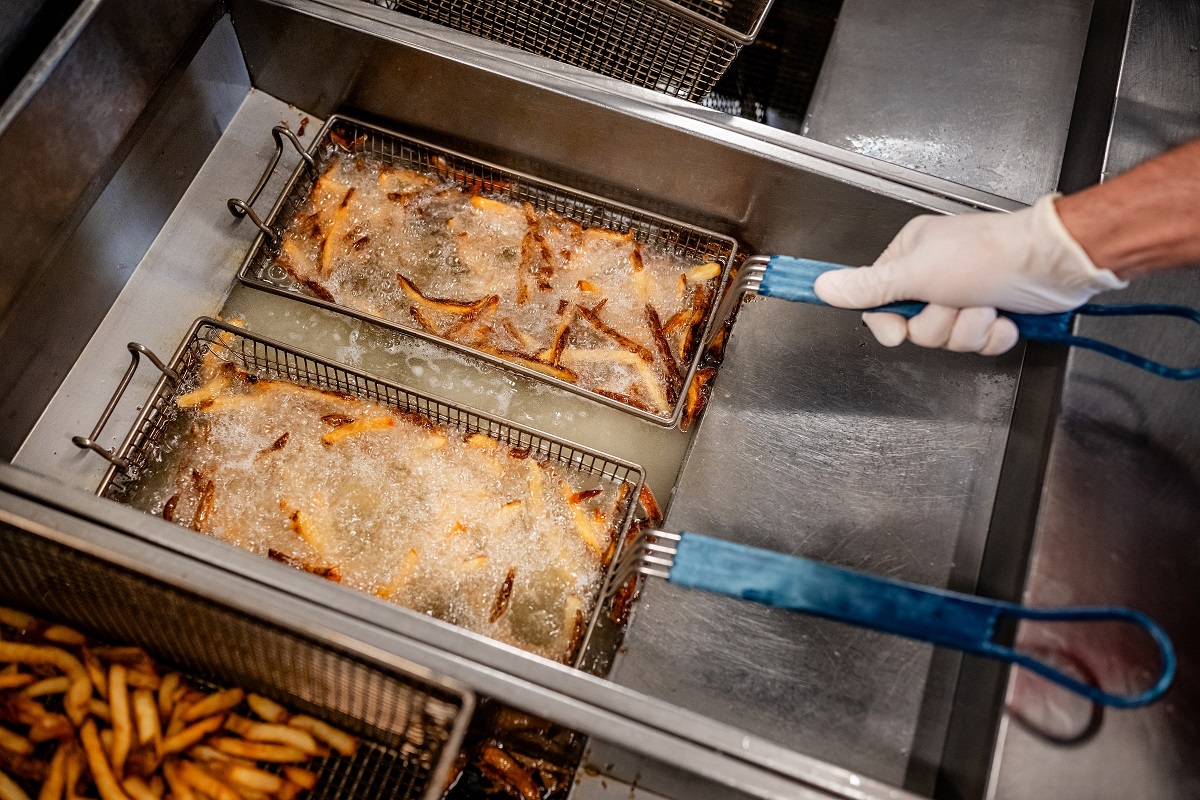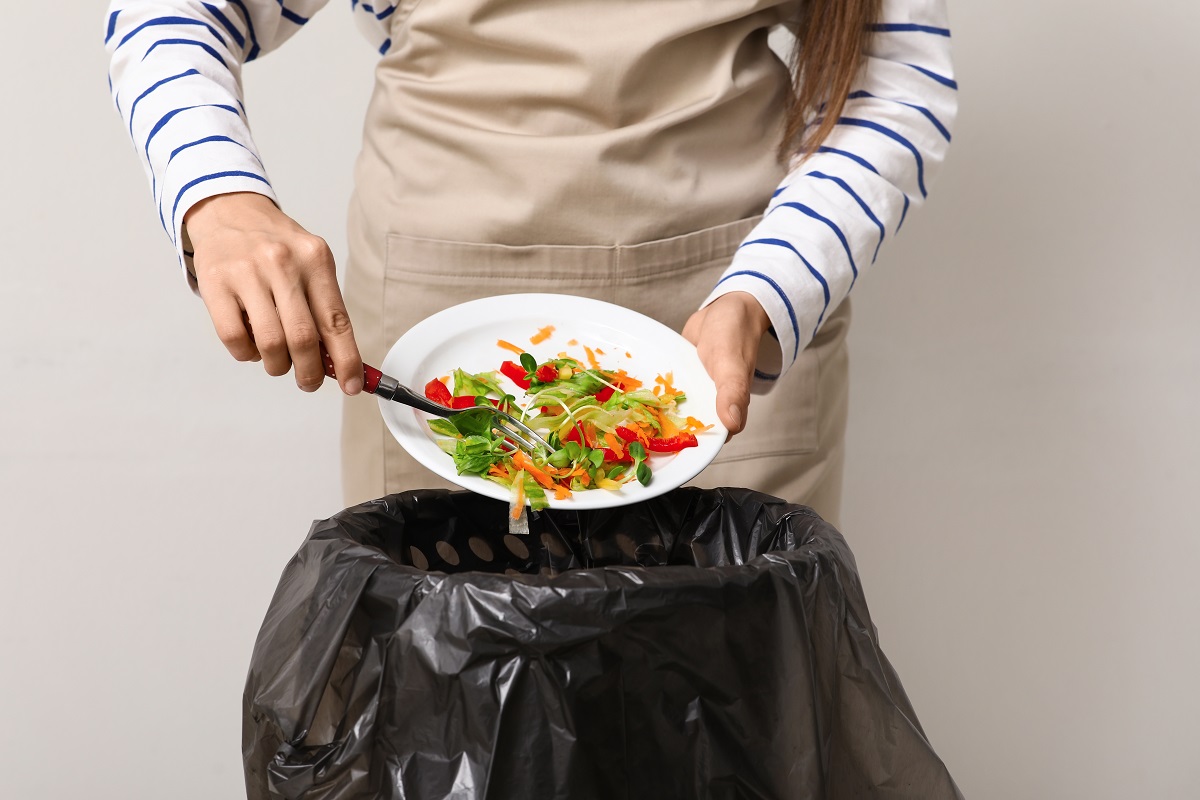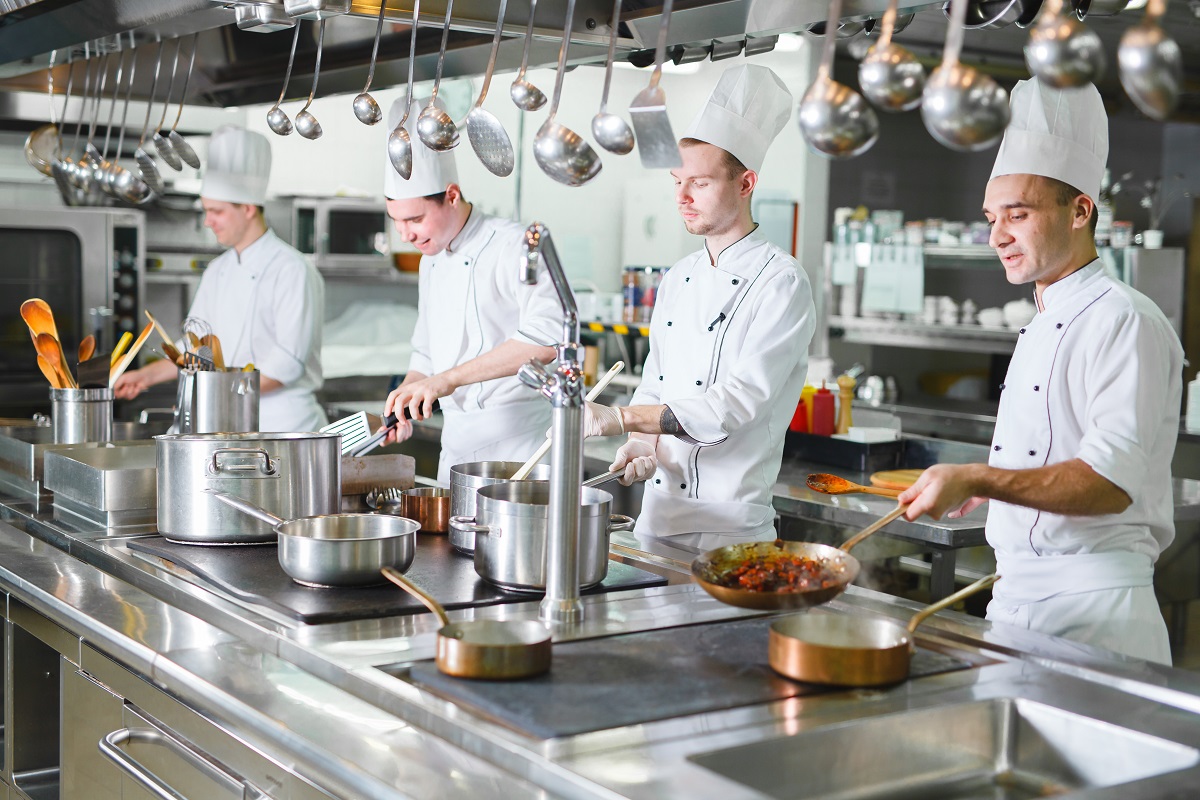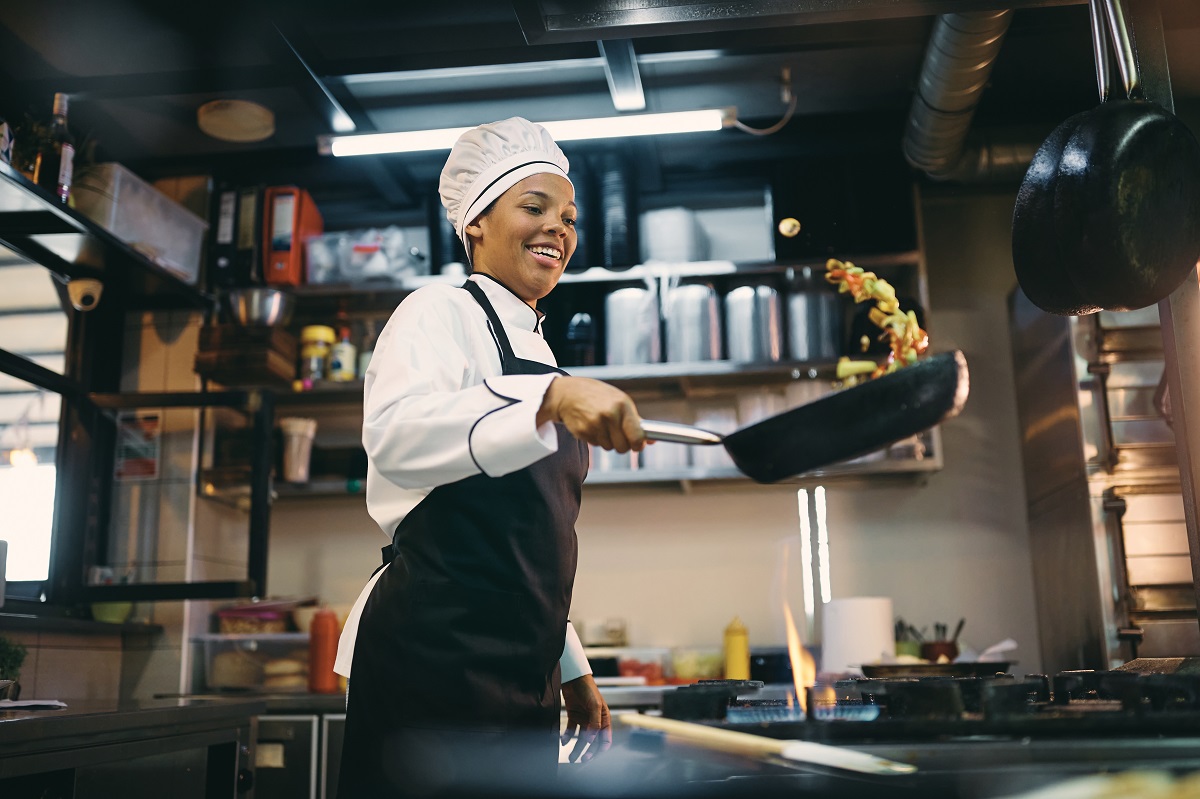You and your team likely take dozens of precautions in your kitchen and throughout your eatery, from ensuring that spills are quickly cleaned up to routinely checking your smoke detectors.
But even the safest, tidiest, and most organized kitchens can place employees at risk of injuries, especially in the heat of lunch or dinner rushes when your staff is operating three times faster than usual.
In particular, burns and scalds are the second most common wounds to occur in restaurants and can lead to everything from infections to scarring.1,2
To that end, learning how to treat an oil burn and implementing effective commercial cooking oil management are essential to the health and well-being of your employees your restaurant’s success and reputation. So, let’s review the process involved, discuss when it might be time to seek medical treatment and explore how you can prevent oil burns from happening in the first place.
Immediate Steps to Take When an Oil Burn Occurs
Oil burns and scalds—which are characterized as damage to the skin caused by heat, friction, and electricity—are more prevalent than you might imagine, with an average of 12,000 burns affecting food service employees per year.3,4 (And keep in mind that many may go unreported.)
These injuries are primarily caused by:
- Hot grease and oil from deep-fat fryers5
- Cooking oil management tasks, such as filtering cooking oil, cleaning and operating equipment, and hauling cooking oil receptacles
- Exposure to hot liquid (such as boiling water) and steam
- Hot cooking surfaces (like stoves and grills), plates, and pans6
Regardless of how an oil burn happens in your restaurant, the first thing to do is breathe. A calm mind will allow you to assess the situation with a logical eye and take appropriate action.
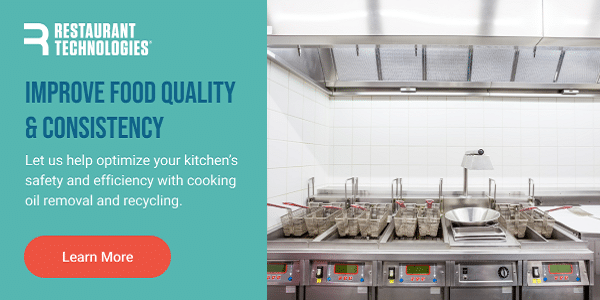
Remove the Cause of the Burn
It’s vital to get rid of the cause of the burn as soon as you or one of your team members sustains it.7
Depending on your situation, this might mean washing the hot grease off your skin and/or taking off any clothing (including gloves) that may have been burned in the process.
Cool the Burn
According to the Academy of Dermatology, your next order of business is to immerse the burned area in cool water for roughly 10 minutes or until the pain subsides.8 Alternatively, you can use cold, wet compresses on the burned skin.
Reach for an Antibiotic Ointment
An over-the-counter antibiotic ointment is key to staving off an infection (so consider this a reminder to ensure your restaurant’s first aid kit has one).9 Some options include10:
- Neosporin
- Bacitracin
- Polysporin
Also, contrary to popular belief, you shouldn’t leave the wound “open” to heal. Instead, cover it with plastic wrap or a sterile cloth.
Apply a Soothing Treatment
To minimize the pain oil burns are notorious for triggering, apply a calming, anti-inflammatory, antibacterial topical burn treatment, such as11:
- Aloe vera
- Honey
- Burn cream
Happen to have read somewhere that creamier items in your kitchen might ease the fiery ache? Ignore it. Milk, butter, egg whites, and the like contain substances that may exacerbate the pain and make you more prone to an infection.
Take an OTC Pain Reliever
A pain reliever like Motrin or Advil can further provide temporary relief.
Assessing the Severity of the Burn
Once the initial shock has subsided, it’s crucial to evaluate the severity of the injury.
While it’s true that minor burns may heal well on their own (as long as you take the proper steps to manage them), more acute burns require medical attention.
How can you spot the difference in yourself, your sous chef, or your server? Experts indicate it’s best to book it to the ER or Urgent Care if the burned skin:
- Exceeds three inches or has affected 10% of your body (this can be measured by using the palm of your hand for reference)
- Shows signs of a second-degree burn or third-degree burn (which we’ll detail shortly) and has occurred on the face, hands, feet, genitals, or joints—these places are more sensitive and more vulnerable to scarring
- Appears charred and/or white
- Is not accompanied by pain
- Smells or is seeping fluid
- Demonstrates symptoms of an infection, such as pus oozing from the burn wound and increased pain, skin discoloration, and swelling
Additionally, if you or one of your employees has an underlying health condition, such as a compromised immune system or diabetes, you may want to seek medical counsel. Why? These conditions may increase your susceptibility to a skin infection.12 It’s also important to seek immediate medical treatment if you develop a high temperature, have difficulty breathing, or if the burn wound occurs from an electric shock. The latter may cause internal damage.
What are the different levels of burns? Let’s have a look.
First-degree Burns
First-degree burns are the mildest of burns. Also known as a superficial burn, they affect only the outer layer of the skin, or what’s known as your epidermis. They may be red and painful, but they don’t feature blisters.
Second-degree Burns
Second-degree burns, or “partial thickness burns,” extend beyond the epidermis and into the next layer of your skin (your dermis). Their distinguishing marks include:
- White, red, or splotchy skin
- Pain that can be intense
- Blisters
- Swelling
- Blanching
Third-degree Burns
As you might imagine, third-degree burns are the most serious of the three and require immediate medical intervention. In these events, the burn has scorched off the first two layers of skin and reached the layer of fat underneath (or the hypodermis).13
They most frequently feature:
- Black, white, red, or dark brown skin
- A “charred” or leathery appearance
- Surrounding blisters
- Moist, shiny skin
The sneaky thing about third-degree burn injury is that they destroy your nerves, so you won’t feel any pain. Not only can a third-degree burn cause nerve damage, but they also often result in scarring. For these reasons, it’s important to call 911 right away.
Although less common, fourth-, fifth-, or even a sixth-degree severe burn does happen. In any case, err on the side of caution and reach out for medical help if you or one of your staff members seem to be experiencing anything above a minor, first-degree burn, or if you notice any of the emergency symptoms outlined above.
How to Prevent Oil Burns and Scalds in Your Kitchen
Learning how to treat an oil burn injury is an important practice for anyone who runs or works in a commercial kitchen. However, creating an environment that mitigates the risk of injuries is just as critical to your and your employees’ wellness.
With this in mind:
- Prioritize proper handling and storage of hot oil – The CDC reports that half of burn injuries in QSRs are due to hot grease; 42% of burns are caused by the same in full-service restaurants.14 This emphasizes the importance of training your staff on the appropriate handling and storage of hot oil, such as refraining from overfilling your fryer with oil and implementing splash guards on commercial fryers.15 Better yet? Boost your restaurant’s safety and prevent cooking oil contamination by opting for a comprehensive commercial cooking oil management system. Restaurant Technologies’ Total Oil Management, for one, provides safe and effective oil delivery, storage, monitoring, filtering, removal, and recycling.
- Wear protective clothing – Protective clothing is a must in commercial kitchens. Heat-resistant gloves, hairnets (when applicable), and oven mitts with grip are all key to keeping burns and scalds at bay.16 Further, ensure your team wears slip-resistant shoes: if one of your staff members slips and falls, they might accidentally plunge a hand into your deep fryer to brace themselves.
Lastly, follow the instructions on your deep fryer to a T, and make sure that your BOH employees have been thoroughly trained on its protocols and understand safety precautions to avoid severe burns.
Oil Burns: FAQs
Ultimately, if an oil burn injury happens at your restaurant, you can always contact your healthcare provider to ensure you take the best course of action. In the meantime, let’s explore a few more oil burn need-to-knows based on some common questions.
Should You Put Ice on Burns?
In a word? No.
Ice, as well as ice-cold water, can irritate your skin and intensify your symptoms. In fact, it may even cause a cold burn. Opt for cool water in the first few minutes of a minor burn instead.
What About Toothpaste?
No to this, too.
Myths suggest that toothpaste can alleviate the pain of a burn blister and work to sterilize wounds, but the opposite is true: toothpaste may translate to a higher vulnerability to infection.
Should You Burst Any Blisters That Appear Alongside the Burn?
Definitely not. Blisters exist for a reason: to cocoon the tissue underneath and shield it from additional damage.17 What’s more, popping a blister may heighten your risk of an infection.
Enhance Your Venue’s Safety with Restaurant Technologies
The food service industry sees the highest number of burn injuries of any employment sector. And while you may have top-notch training and protocols securely in place, there are few things in life that are entirely risk-free—commercial kitchens included.
Fortunately, Restaurant Technologies’ cooking oil management systems may help dial down your risk of cooking oil accidents.. Whether you want to automate your oil management or turn to a more advanced method for hood and flue cleaning, we offer comprehensive services for restaurants to assist you with making your restaurant as safe, clean, and efficient as possible.
Sources:
- Morgan, Collins, Yeast & Salyer. Common injuries in the food service industry. https://www.kentuckycourage.com/blog/common-injuries-in-the-food-service-industry/
- Mayo Clinic. Burns. https://www.mayoclinic.org/diseases-conditions/burns/symptoms-causes/syc-20370539
- Labor & Industries. Burn injury facts: scald burns in restaurant workers. https://www.mylegalneeds.com/blog/risk-of-burn-injuries-for-food-service-workers.cfm
- Johnson & Gilbert, P.A. Law Offices. Florida food service workers at risk for serious burns. https://www.mylegalneeds.com/blog/risk-of-burn-injuries-for-food-service-workers.cfm
- OSHA. Young workers safety in restaurants etool. https://www.osha.gov/etools/young-workers-restaurant-safety/cooking
- Society Insurance. How to prevent burns in the kitchen. https://societyinsurance.com/blog/how-to-prevent-burns-in-the-kitchen
- Yale New Haven Health. Treating cooking burns at home. https://www.ynhhs.org/articles/treating-burns-at-home
- American Academy of Dermatology Association. How to treat a first-degree, minor burn. https://www.aad.org/public/everyday-care/injured-skin/burns/treat-minor-burns
- Healthline. Home remedies for burns. https://www.healthline.com/health/home-remedies-for-burns
- GoodRx. Which is the best antibiotic ointment? Polysporin, Neosporin, and Bacitracin. https://www.goodrx.com/classes/polypeptide-antibiotics/polysporin-neosporin-bacitracin
- Complete Care. How to treat a cooking burn.https://www.visitcompletecare.com/blog/cooking-oil-burn-treatment
- GoodRx. When is a burn serious enough for you to go to the hospital? https://www.goodrx.com/health-topic/dermatology/when-to-go-to-hospital-for-a-burn
- Cleveland Clinic. Third degree burn. https://my.clevelandclinic.org/health/symptoms/24531-third-degree-burn
- CDC. Occupational burns among restaurant workers– Colorado and Minnesota. https://www.cdc.gov/mmwr/preview/mmwrhtml/00021845.htm
- Fast Fix LLC Restaurant Services. Tips for properly handling hot oil. https://fastfixllc.blogspot.com/2017/10/tips-for-properly-handling-hot-oil.html
- AmTrust Financial. How to prevent burns in commercial kitchens. https://amtrustfinancial.com/blog/loss-control/how-to-prevent-burns-commercial-kitchens
- Anesthesia, Surgery and Critical Care. The de-roofing of burns blisters. https://www.mysurgerywebsite.co.uk/website/SWUK001/files/The%20De-roofing%20of%20Burns%20Blisters_NBT002996.pdf
